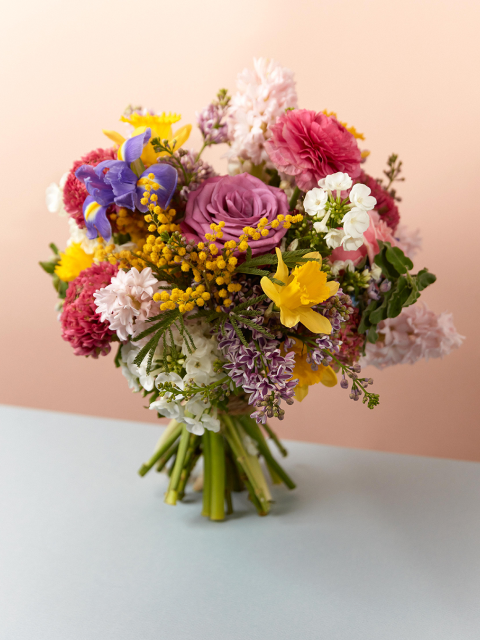Colours and shapes
The iris is famous for its many beautiful shades of blue: an unusual colour for cut flowers. They are also available in white, yellow and purple, plus there are also many different types of bi-coloured irises. The flower is composed of three petals. They open up completely, so that we can see deep into the heart of the bloom.
Symbolism
In Ancient Greek mythology, Iris was the goddess of rainbows. The flower was named after her because of its many different colour varieties. However Iris was also the messenger of the gods, bridging heaven and earth, just like the arc of a rainbow. In flower language therefore, the gift of irises means that the giver has a message to relate.
Origin
The aesthetic beauty of the iris has been celebrated for thousands of years. On the walls inside the Egyptian pyramids there are paintings of the flower that scientists have dated to 1500 BC. Irises also decorated the arms of Louis XVIII, promising protection against death and served as a model for Vincent van Gogh.
Irises, along with crocuses and freesia, belong to the Idraceae family. They grow best in the northern climates — and they curiously do not like having wet feet. If you spot an iris in flower at the edge of a pool or pond, you can be sure that the water there is shallow.















